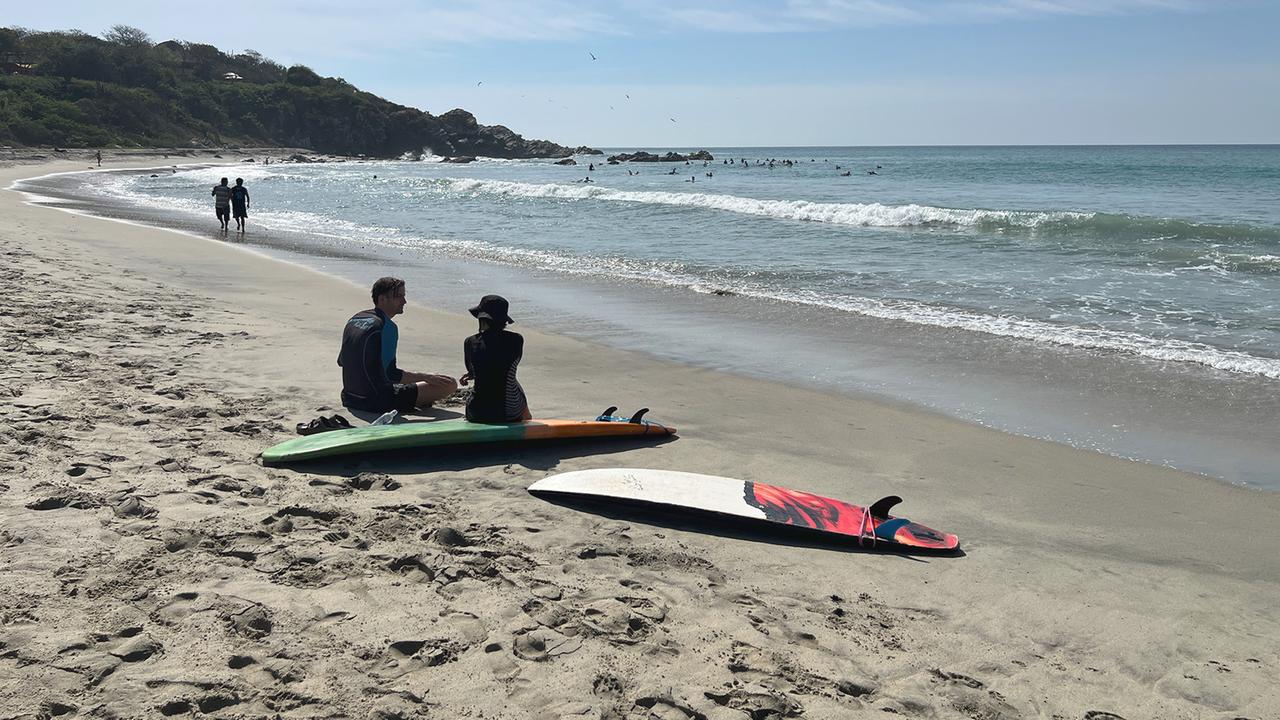report
Puerto Escondido on Mexico’s Pacific coast was once a small fishing town. Today it is a surfing mecca. The enthusiasm for the very special waves is both a blessing and a curse for the place.
Jafet Ramos is a professional surfer. He is currently explaining to a student how he can improve his posture on the surfboard. The 26-year-old comes from Puerto Escondido and has been on the board since he was a little boy. When surfing you can block out everything around you, he says:
You no longer think about your problems, but about catching the best wave. There is only you and the wave. You forget all the worries around you.
Fast and big waves
Japheth didn’t have an easy time of it in his childhood and youth. His parents were drug addicts and violent. He is proud of himself for making it this far and earning a living from surfing. Jafet takes part in international tournaments. He has won various prizes – including in his hometown in 2019, when he scored the most points in tube riding – surfing in a closed, tube-shaped wave.
As a surfing professional, he competes in various competitions in North and South America, but his hometown itself is also considered a surfing mecca. Puerto Escondido is located on the Pacific coast in the state of Oaxaca. Above all, Playa Zicatela and its “beach break” – the moment when the waves break on the sandbank – are legendary.
During the high season between March and October, very fast and large waves sometimes arise here – they can then be almost two meters high and form their typical tube shape through which the surfers wind their way. During big competitions, the beach is full of people who watch in amazement as the professionals climb the huge breakers.
Sometimes the waves just splash onto the beach, but they can also be two meters high and extremely fast.
“I’ll just throw myself in”
However, it is no longer just experienced surfers who are drawn to Puerto Escondido. “I love Puerto Escondido,” says Melissa. After her surfing session, the 37-year-old relaxes on the beach with a beer and watches the picturesque sunset. Melissa comes from Canada and Switzerland, but she gave up her old home to devote herself to traveling. And recently also surfing.
“I don’t take lessons, I just throw myself in and let myself whirl around,” she says. “I’m trying to catch the wave somehow.” Melissa, like so many others here, is “stoked,” as they say in surfer jargon: hooked, addicted to catching waves and experiencing the fleeting moment of joy when you manage to time it just right Let the surfboard float over the water for a few seconds.
If you would like to have lessons in surfing, you can book it into one of the surf schools on the beach – for example the one run by Godofredo Vásquez.
From the sleepy village to the Tourist magnet
People like Godofredo Vásquez benefit from this. Customers come to his surf school every day to rent boards and take lessons. Puerto Escondido was once a hidden gem. The originally small fishing town has now become a tourist magnet.
Vásquez was one of the first to start giving lessons almost 30 years ago. He remembers the beginnings of surfing in Puerto Escondido:
40 years ago Puerto was a small village. There was jungle everywhere around the beach. The Americans came here to surf and threw away their broken boards or gave them away. We then used these old things for surfing.
A blessing and a curse of the boom: more and more hotels are being built to accommodate the many tourists.
Surfing as a connection to nature
Today, a number of bars, shops and surf schools line the beach promenade. This is how Godofredo Vásquéz secures his livelihood. However, he fears that the relaxed atmosphere in the town will be lost and investors will want to build large hotels.
Professional athlete Jafet Ramos feels the same way. For him, surfing wasn’t just about making money or winning. Surfing is more than just a sport. “You connect with nature when you surf. You only want the best for it. We don’t want people to destroy it with big construction sites or something like that. We have to take care of nature.”
Christina Fee Moebus, ARD Mexico City, tagesschau, January 13, 2024 4:52 p.m




